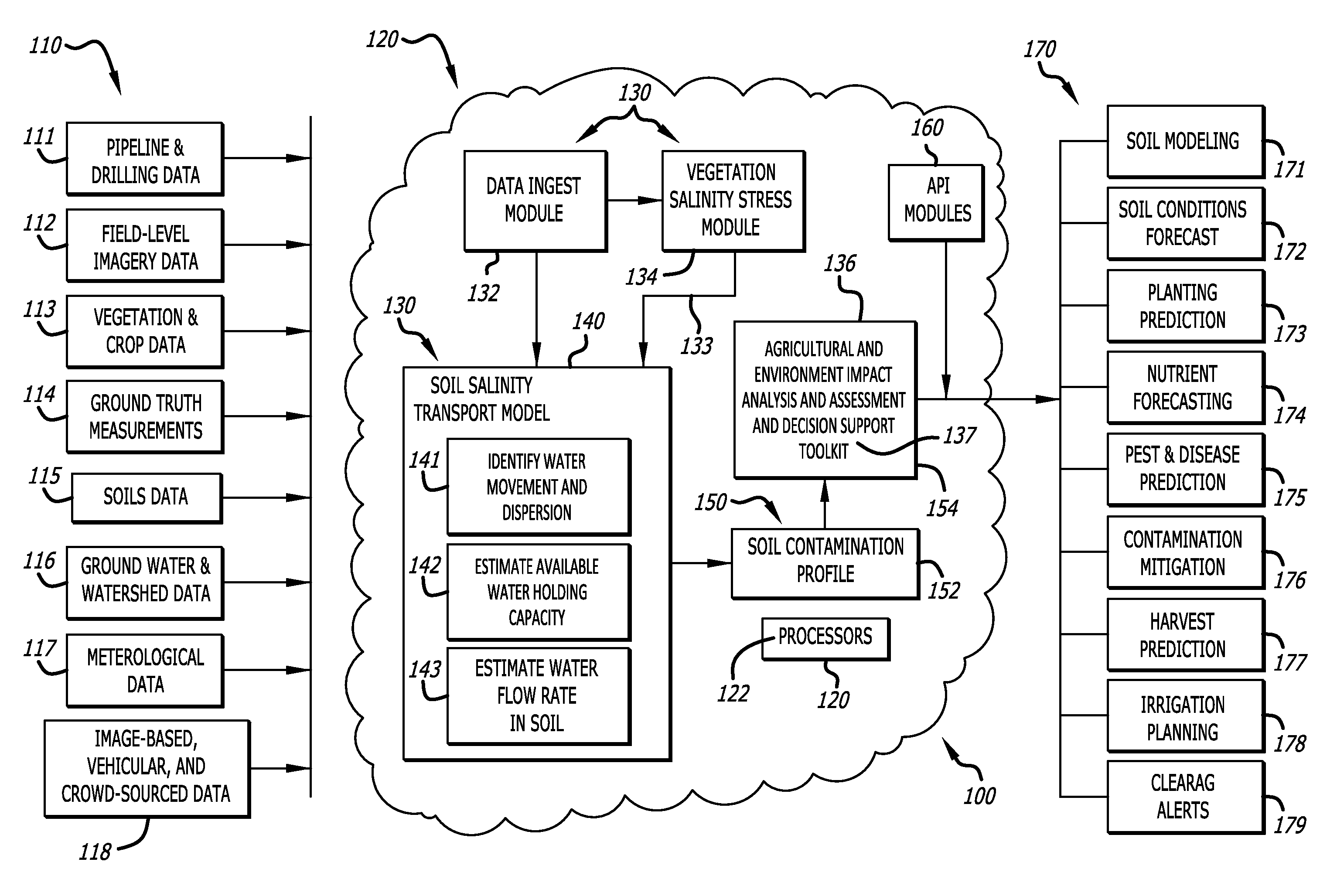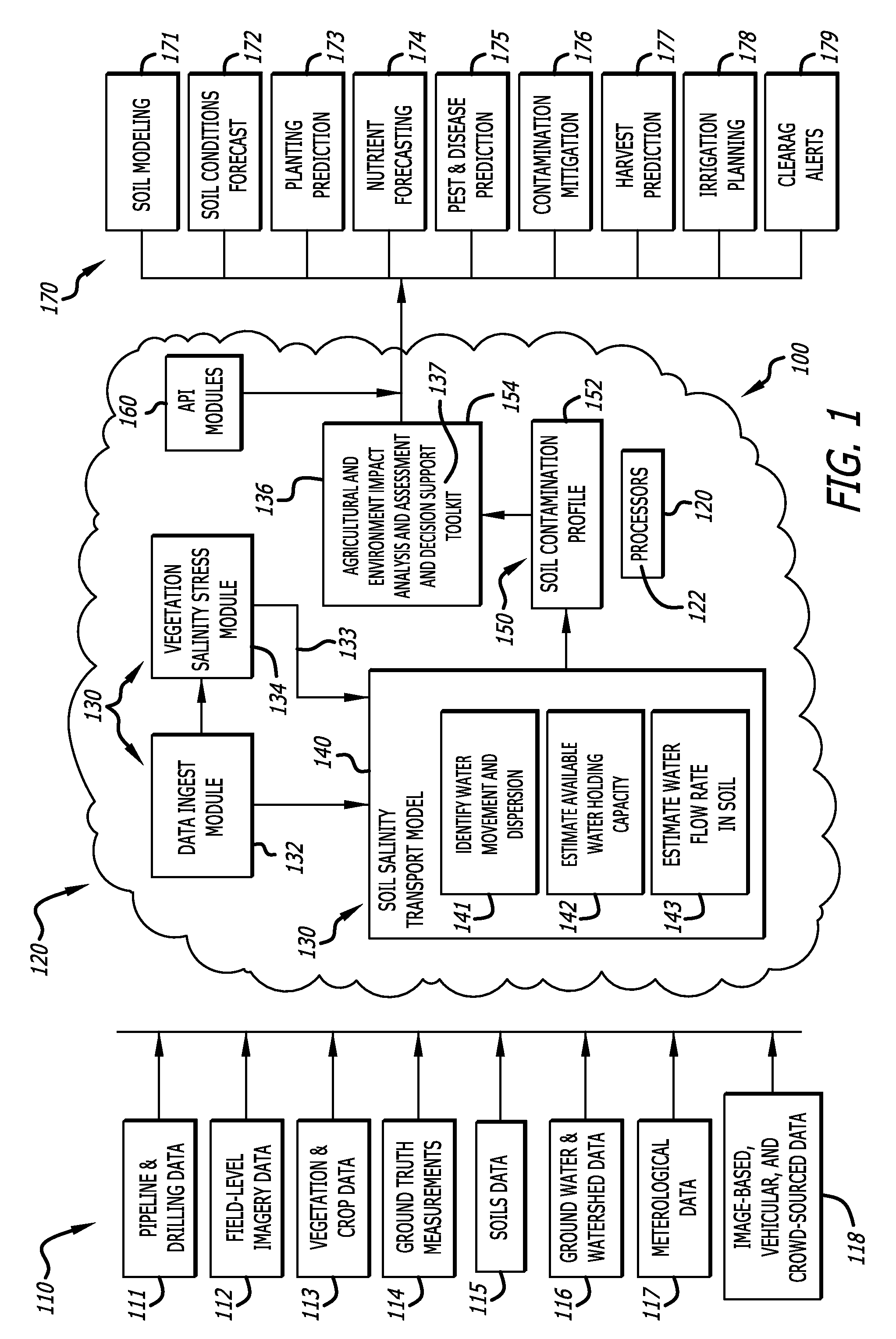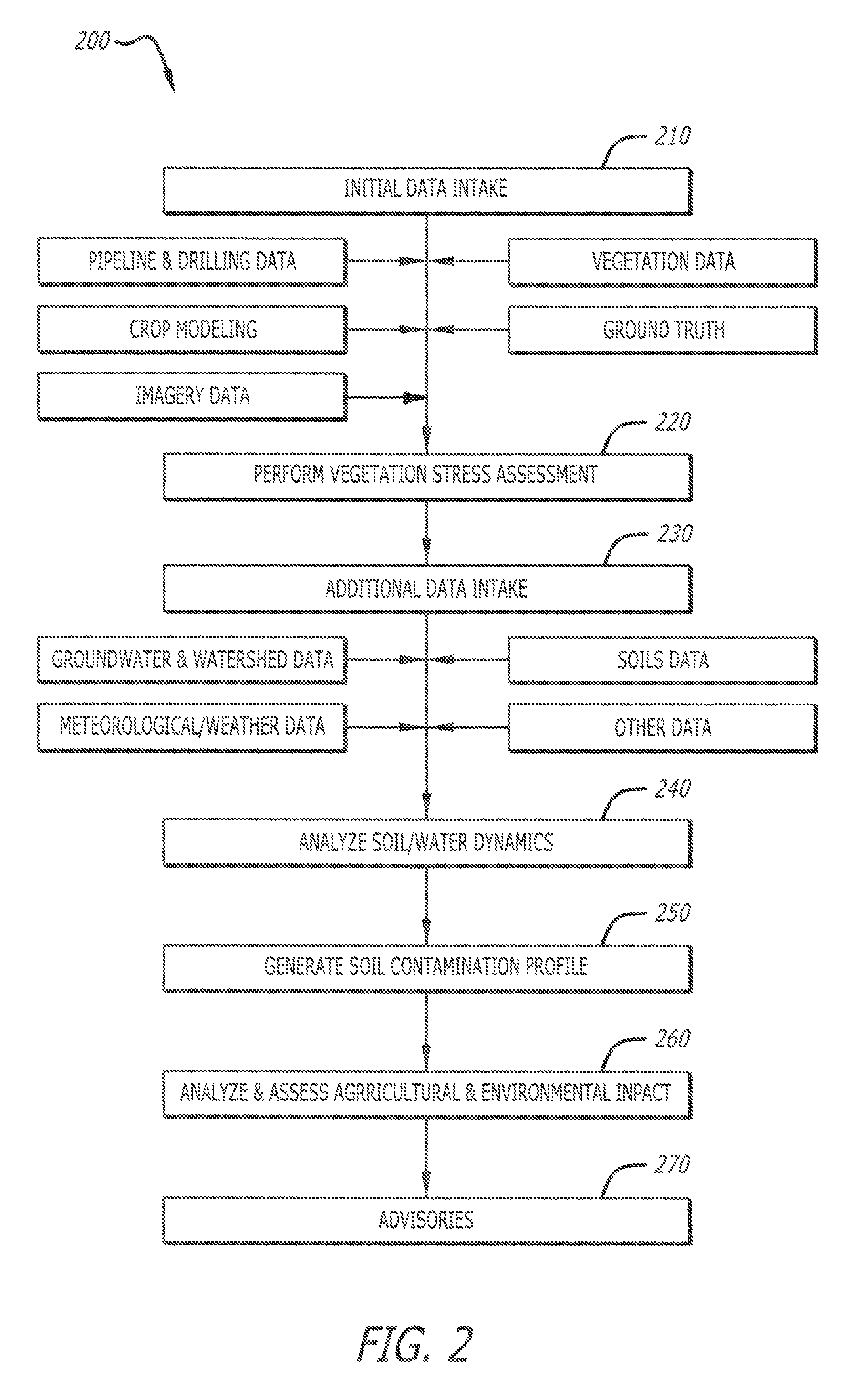Measurement and modeling of salinity contamination of soil and soil-water systems from oil and gas production activities
a technology of oil and gas production and salinity contamination, applied in the field of system and method of measuring and modeling salinity contamination of soils, can solve the problems of reducing the ability of plants to uptake water, destroying soil structure and permeability, and raising the sodicity of soil and potentially reducing soil textur
- Summary
- Abstract
- Description
- Claims
- Application Information
AI Technical Summary
Benefits of technology
Problems solved by technology
Method used
Image
Examples
Embodiment Construction
[0015]In the following description of the present invention reference is made to the exemplary embodiments illustrating the principles of the present invention and how it is practiced. Other embodiments will be utilized to practice the present invention and structural and functional changes will be made thereto without departing from the scope of the present invention.
[0016]FIG. 1 is a diagram of system components in an analytical framework 100 for soil contamination detection, assessment and impact analysis according to the present invention. In this analytical framework 100, input data 110 is ingested from various sources for analysis in one or more data processing modules 130 within a computing environment 120. These data processing modules 130 are configured to receive, ingest, request, or otherwise obtain the data input data 110, perform a vegetation salinity stress assessment, and analyze both soil contamination from saltwater that is a by-product of oil and gas drilling opera...
PUM
 Login to View More
Login to View More Abstract
Description
Claims
Application Information
 Login to View More
Login to View More - R&D
- Intellectual Property
- Life Sciences
- Materials
- Tech Scout
- Unparalleled Data Quality
- Higher Quality Content
- 60% Fewer Hallucinations
Browse by: Latest US Patents, China's latest patents, Technical Efficacy Thesaurus, Application Domain, Technology Topic, Popular Technical Reports.
© 2025 PatSnap. All rights reserved.Legal|Privacy policy|Modern Slavery Act Transparency Statement|Sitemap|About US| Contact US: help@patsnap.com



